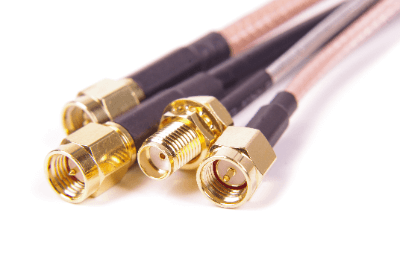What Is an SMA Connector?

SMA connectors (Sub Miniature Type A) are one of the most compact and high-performance connectors for microwave applications, offering many excellent features such as stability, high reliability, and excellent mechanical characteristics.
SMA connectors are specified for interfaces by the US military standard MIL-STD-348 and can be used in the frequency range of DC to 18 GHz for general connectors, but some types can be used up to 25 GHz, especially for high-frequency applications. It is one of the most frequently used coaxial connectors for various applications.
Uses of SMA Connectors
SMA connectors are the most commonly used connectors in the microwave band.
Compared to N-type connectors, SMA connectors are characterized by their smaller size and are therefore mainly used for internal wiring of equipment.
The outer diameter is 4.2 mm, while the inner diameter is 1.27 mm. In most cases, Teflon is used as the insulation supporting the inner conductor.
The main operating frequencies are DC to 18 GHz.
Applications include precision measuring instruments, mobile communication base stations, and small communication equipment.
Principle of SMA Connectors
SMA connectors are one of the high-performance ultra-compact connectors for microwave applications.
The cables used are not only general flexible cables but also semi-rigid and semi-flexible cables with copper pipes as outer conductors.
In addition to the high dimensional accuracy of the connectors, some connectors use stainless steel for the coupling nut part, which provides high mechanical strength.
Furthermore, the usable frequency range is much higher than that of N-type connectors, ranging from DC to 18 GHz.
Also, since soldering is not required for these connectors, the working time can be significantly reduced compared to the case where soldering is required.
There is a difference between microstrip line and stripline handling.
When stripline is used, the transmission line is not exposed (because of the connector’s shielded structure), so radio wave wraparound is suppressed, and oscillation, which can be a problem when designing amplifiers, can be suppressed.